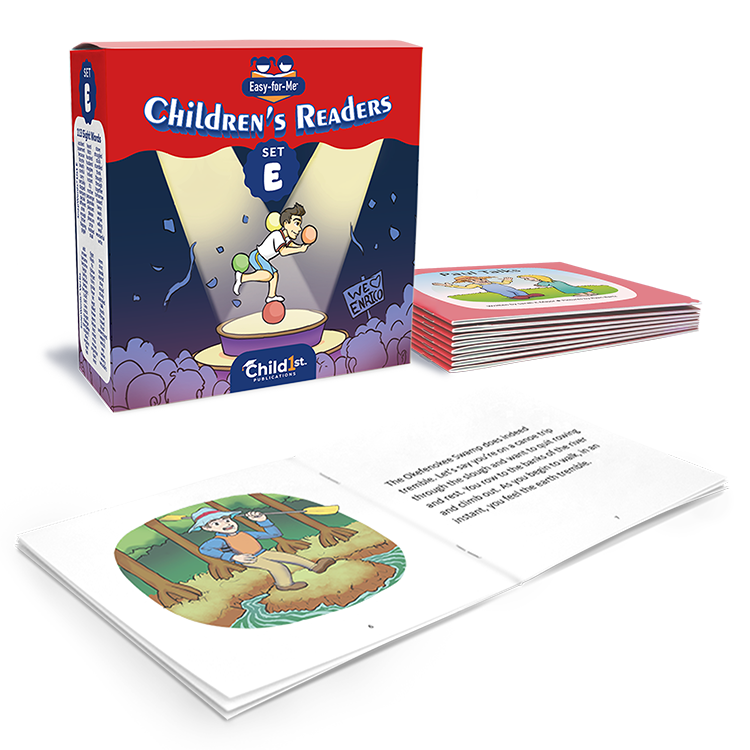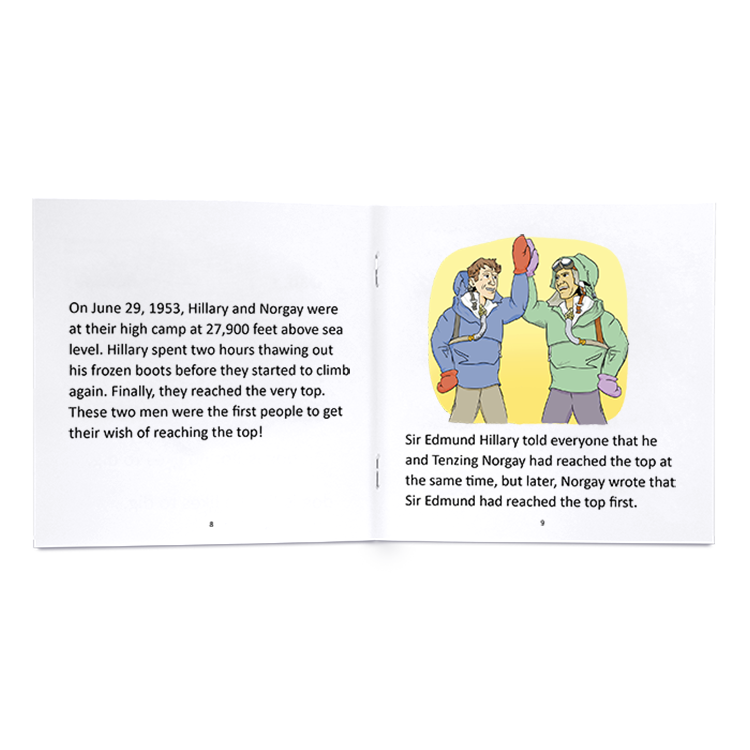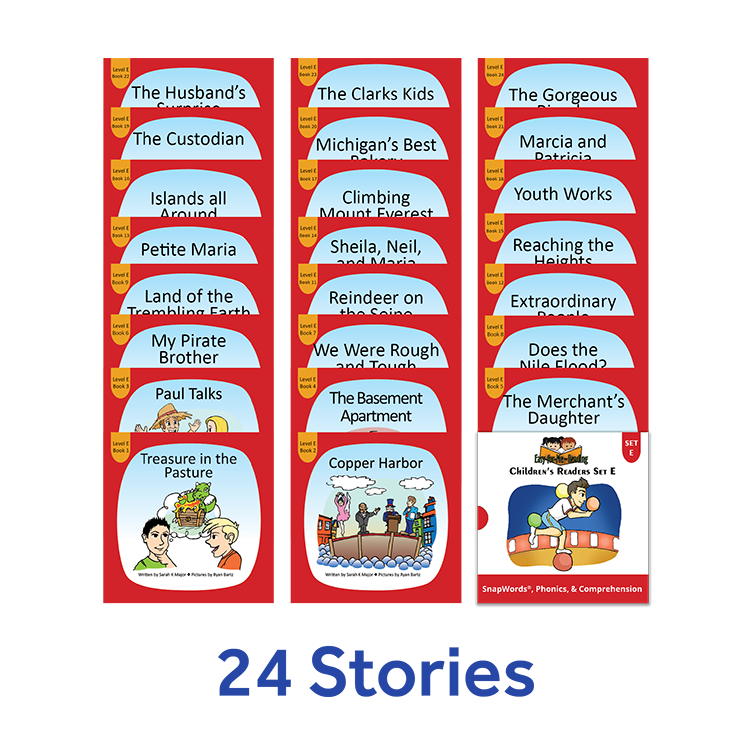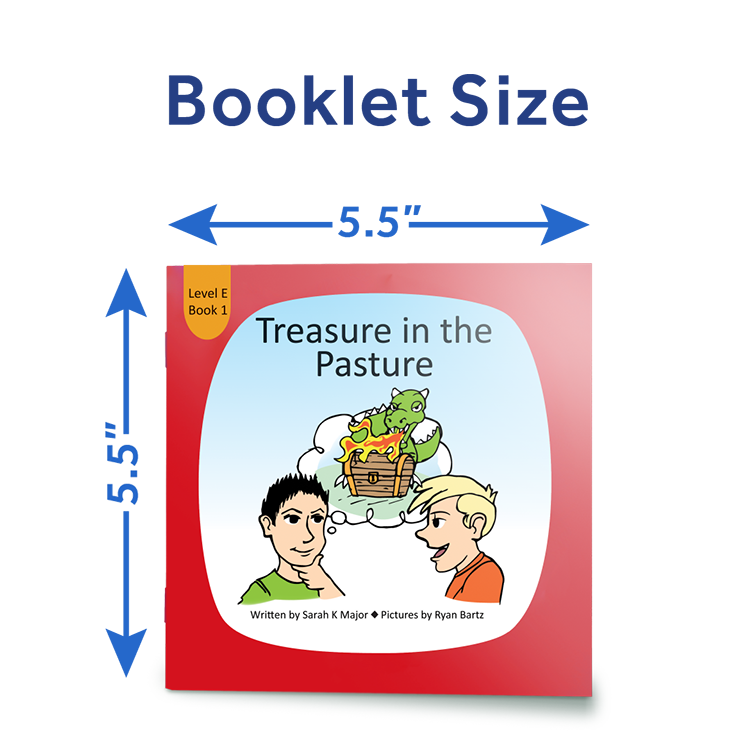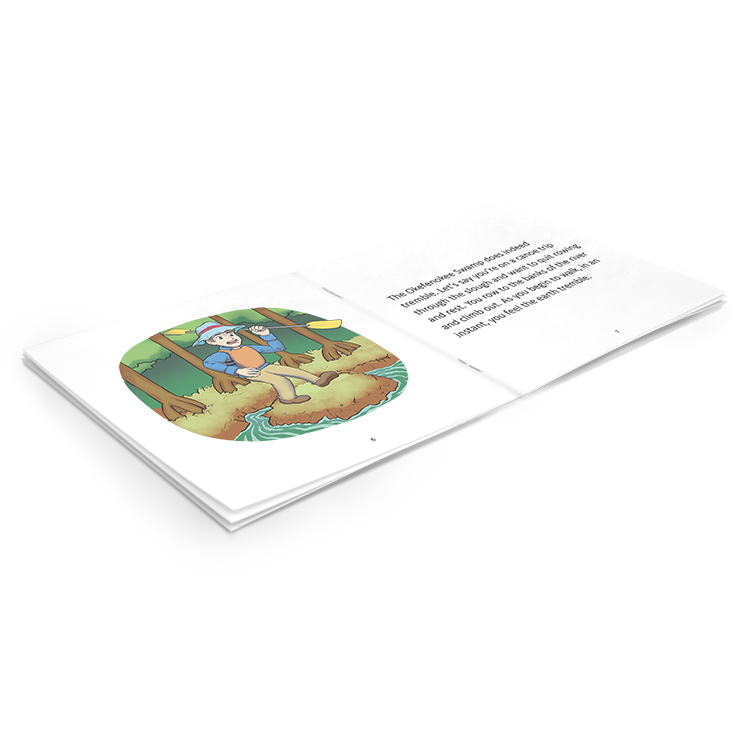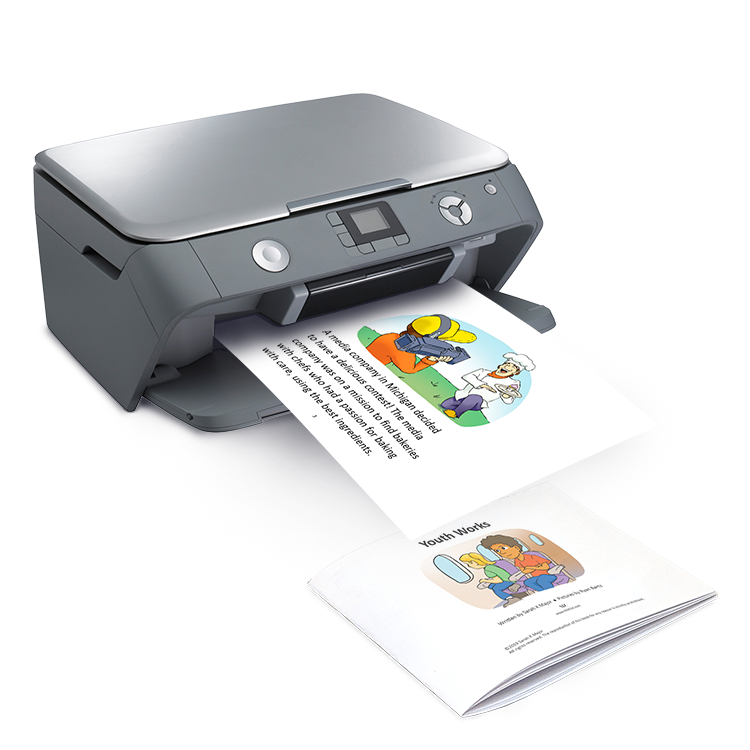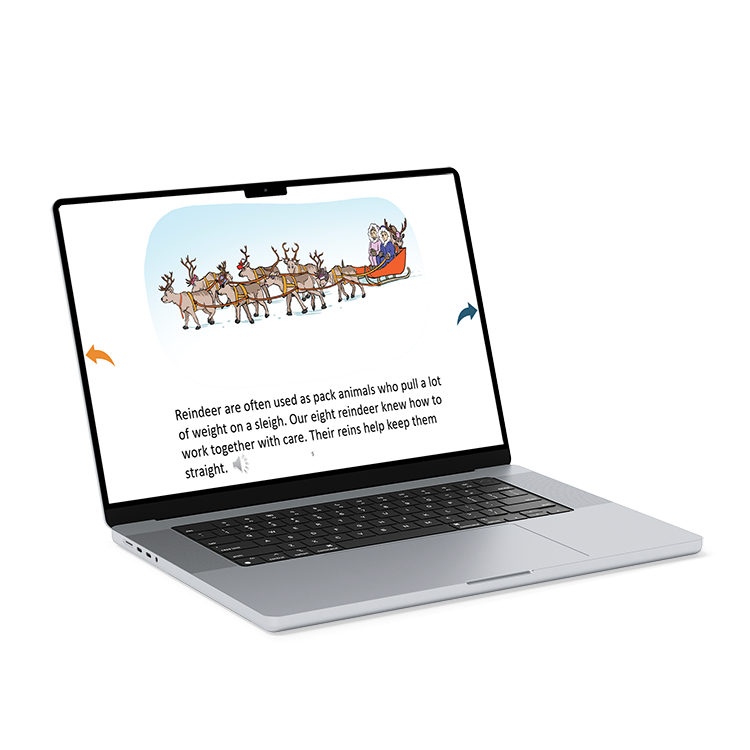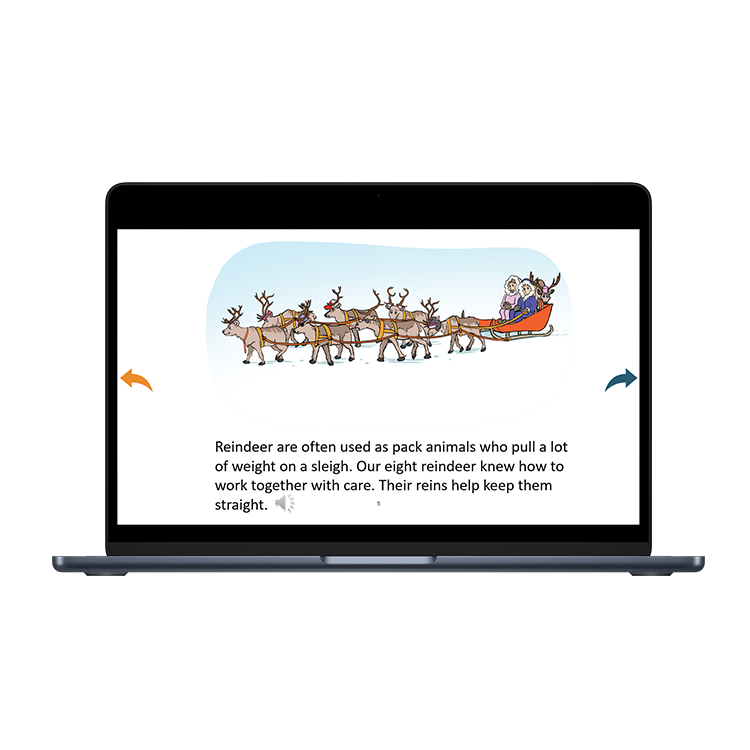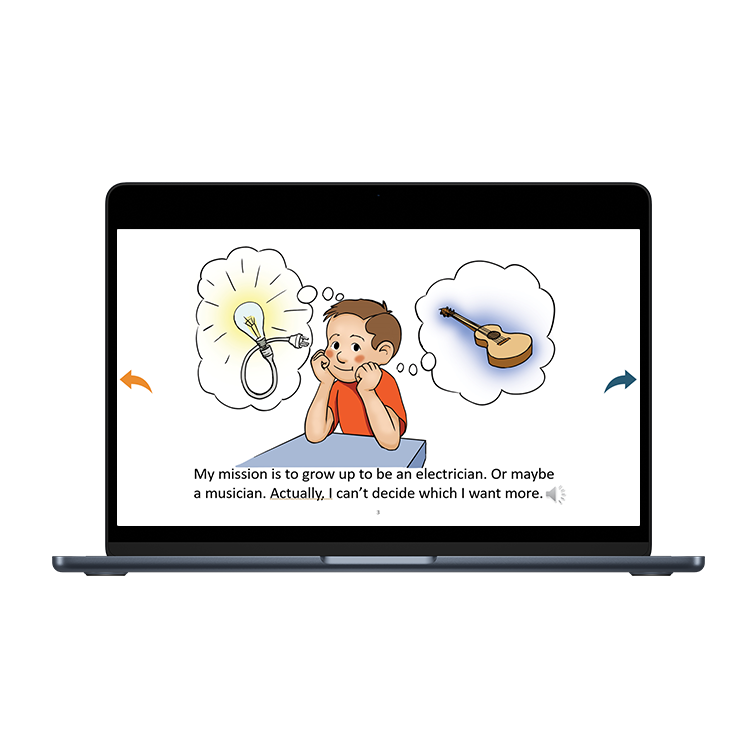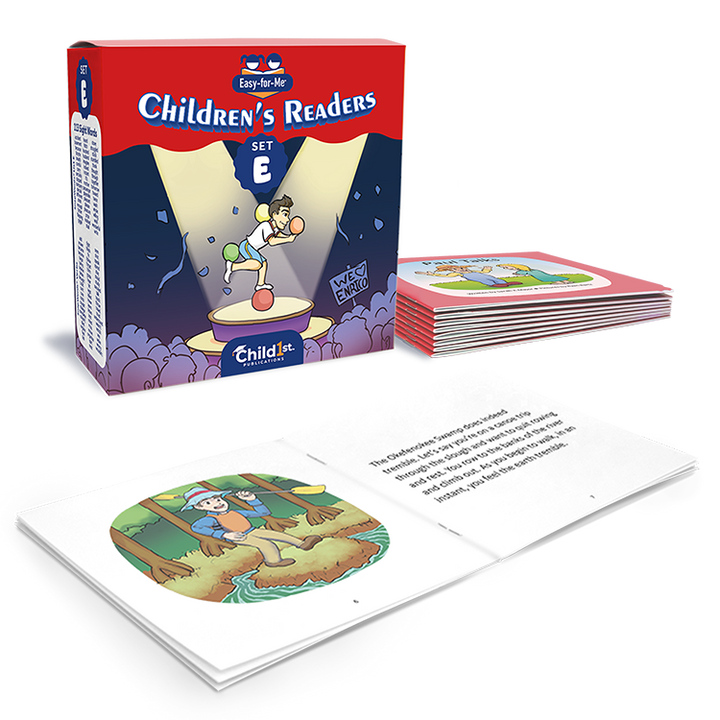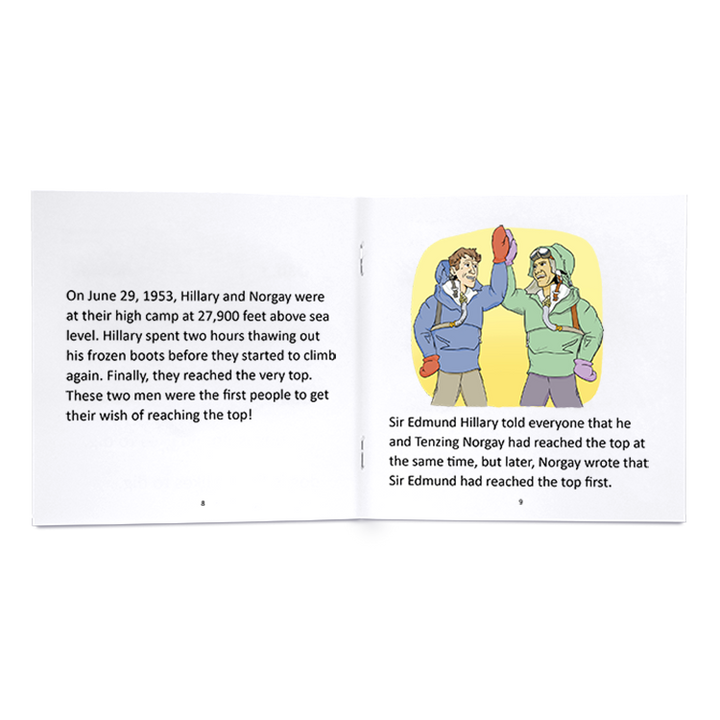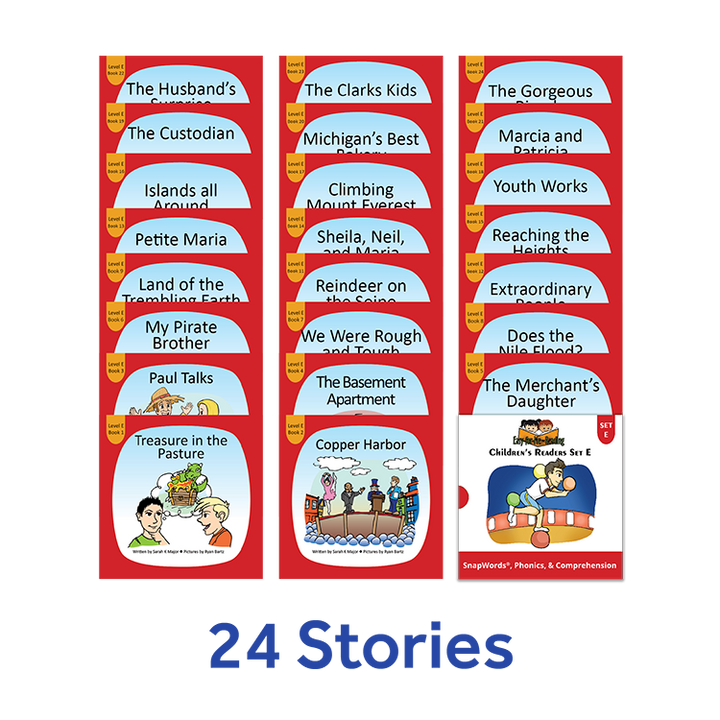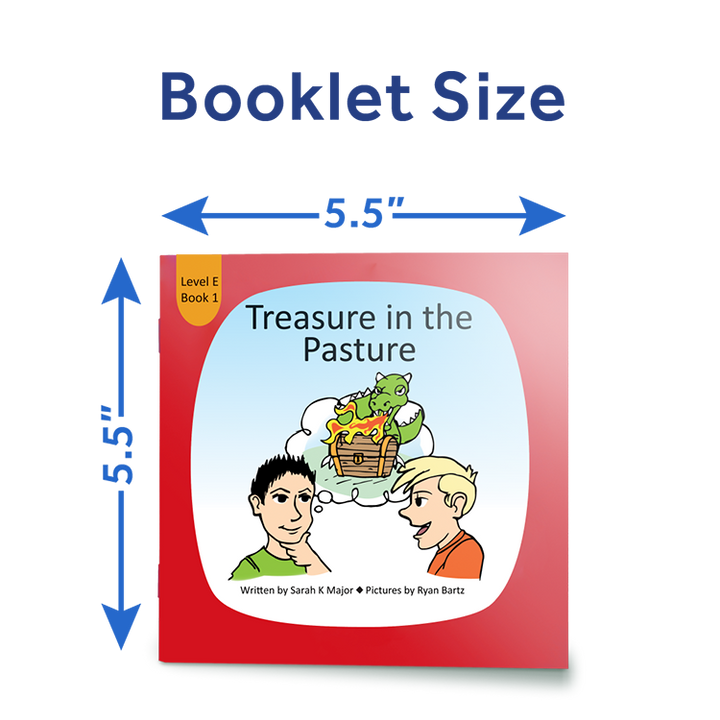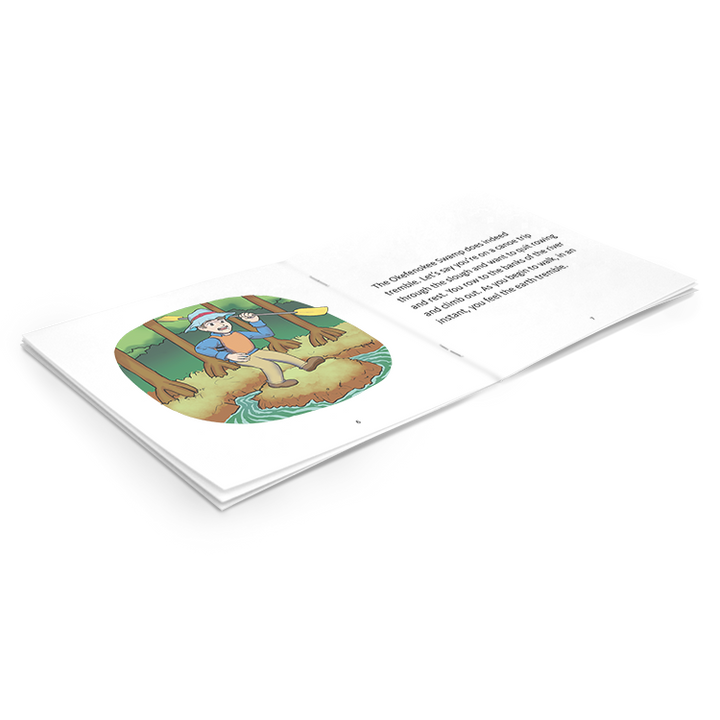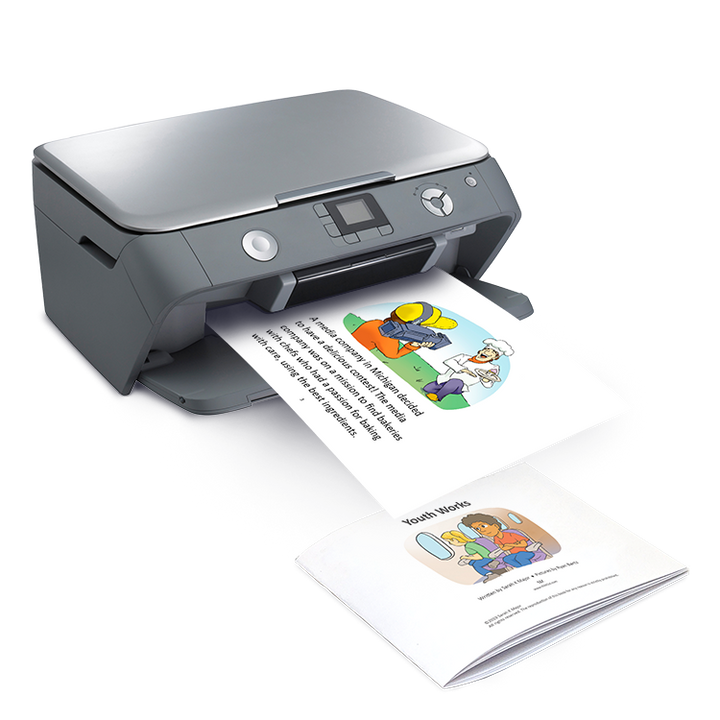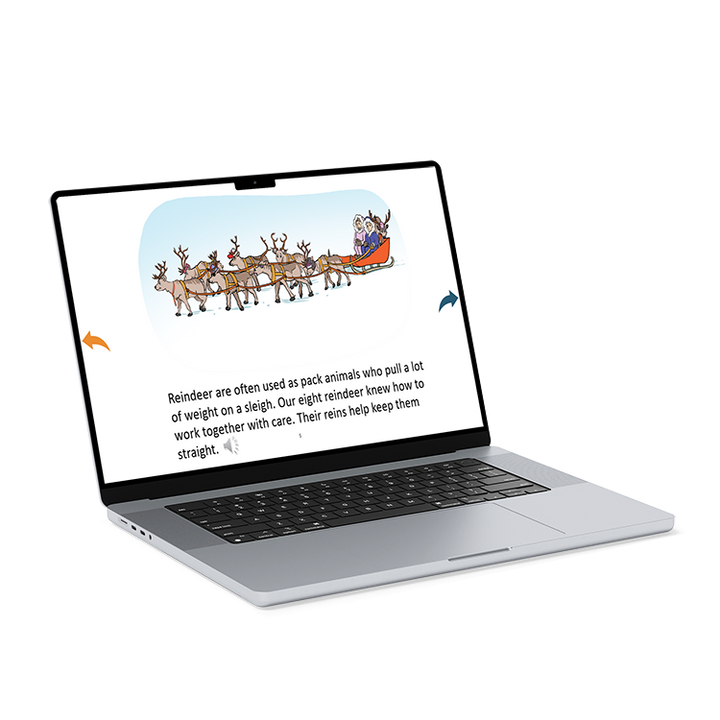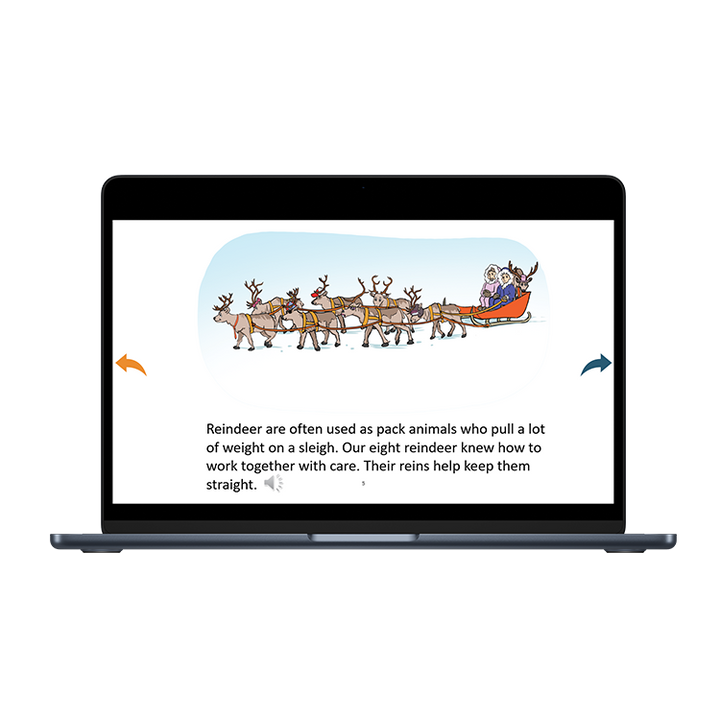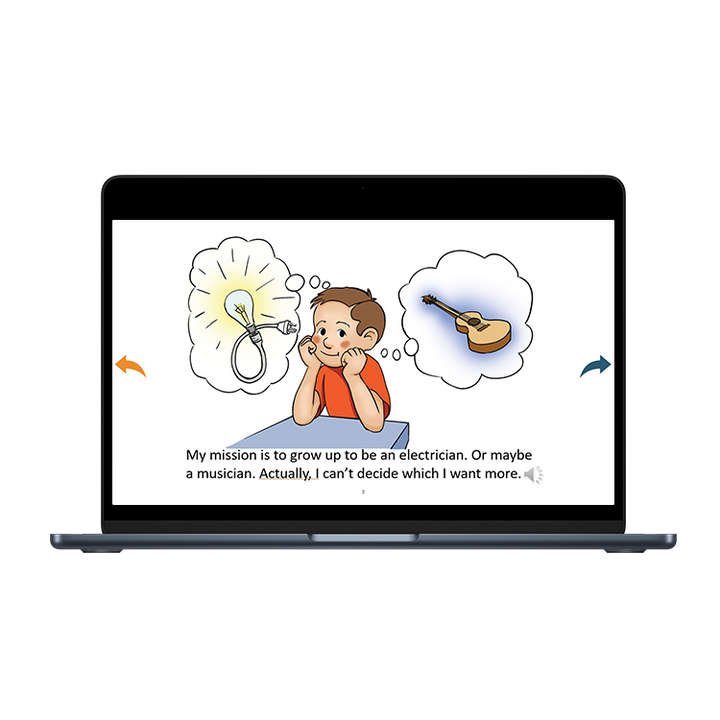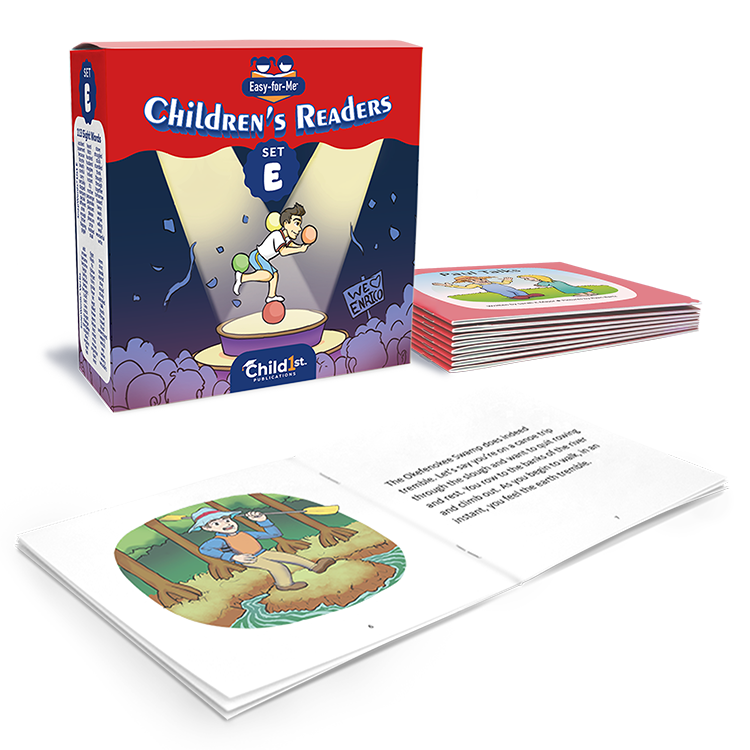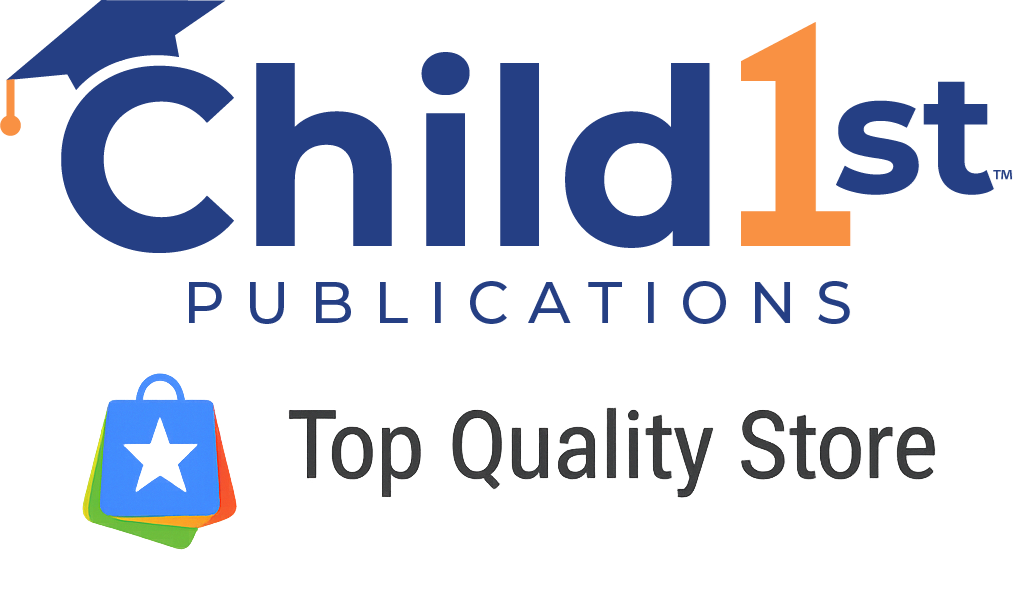Unlock the world of confident reading with Easy-for-Me™ Children's Readers Set E! These captivating decodable books are meticulously crafted to guide every child on a seamless journey to becoming a skillful reader. No more guesswork or struggles with unknown words—each reader is thoughtfully designed to teach all necessary skills before young readers embark on the reading adventure. Set E delves into essential sound spellings, including short vowel spellings ED, IE, AI, UI, AU, OU, OUGH, AUGH, and more, ensuring a solid foundation for successful reading. The set introduces 113 new Snapwords® from SnapWords® List E and SnapWords® Verbs, along with suffixes and their meanings. As the final piece of the puzzle, Set E completes the sound spellings from The Illustrated Book of Sounds & Their Spelling Patterns. With this set, children not only read but flourish as confident readers, empowered with the skills to tackle any reading challenge!
What’s Included
- Set E Readers include 24 full-color, 12-page stories with storage sleeve, covering: Short vowel spellings ED, IE, AI, UI, AU, OU, OUGH, AUGH, suffixes and their meanings, reading practice for all 51 words from SnapWords® List E, all 62 words from SnapWords® Verbs, and more!



